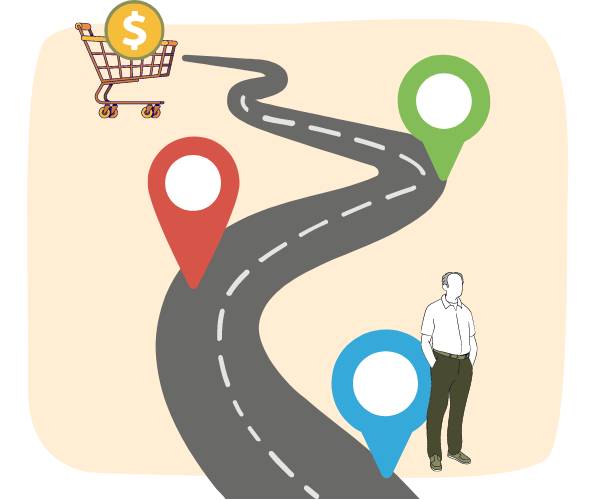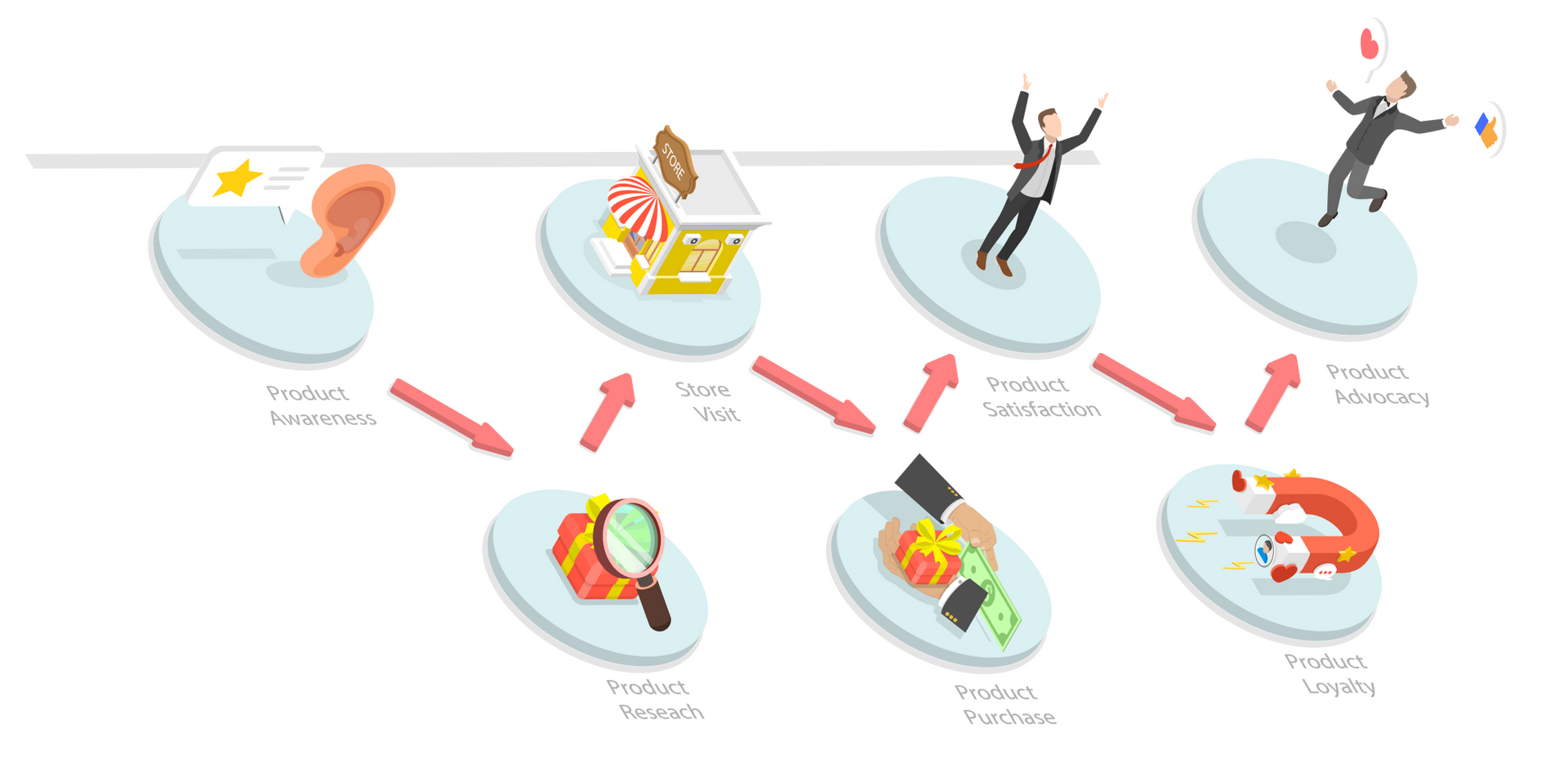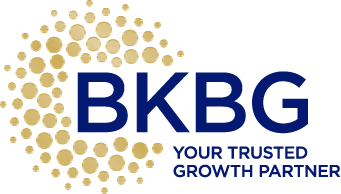Customer Journey Mapping for Your Local Business
You may have a general idea of your customer's journey from first discovering your brand to eventually making a purchase—but are you fully aware of each step, each interaction, each speed bump along the way? Understanding your customer's journey is not just an advantage, it's a necessity.
For local business owners, this insight can be the key to unlocking growth and fostering relationships that turn first-time visitors into lifelong patrons. Customer journey mapping, the strategic process of outlining every step a customer takes from discovery to purchase, offers invaluable insights that can shape your marketing strategies, product development, and customer service initiatives.

Why Customer Journey Mapping is Essential
When you familiarize yourself with the customer's experiences from their first awareness of your brand through to post-purchase, you can illuminate the path to improving satisfaction and loyalty.
Customer journey mapping allows you to visually represent the process your customers go through when interacting with your business, highlighting areas of excellence and opportunities for improvement. When you map your customer's journey, your local business can tailor strategies to meet consumer needs more effectively and ensure a more personalized and impactful customer experience. This isn't just about addressing pain points; it's about elevating the entire customer experience to differentiate your business in a competitive marketplace.
@ Enhanced Customer Experience
By understanding the path your customers take, you can identify and remove friction points, thereby enhancing their overall experience. This leads to higher satisfaction rates, positive reviews, and increased loyalty.
@ Improved Marketing Strategies
Customer journey mapping allows you to tailor your marketing messages and campaigns based on the specific needs and behaviors of your customers at different stages of their journey. This targeted approach results in more effective marketing and higher conversion rates.
@ Better Product Development
Insights gathered from mapping the customer journey can highlight gaps in your offerings or opportunities for new products or services that meet your customers' needs more effectively.
@ Competitive Advantage
In a crowded market, providing a seamless and personalized customer journey can set your local business apart from competitors, attracting more customers and fostering brand loyalty.
How to Map Your Customer's Journey
Mapping your customer's journey may initially seem complicated and time-consuming, but by breaking it down into manageable steps, you can gain valuable insights that will drive your business forward.
Here's how to get started:
1. Define Your Objectives
Begin by identifying what you hope to achieve with your customer journey map. Whether it's increasing conversions, improving customer satisfaction, or identifying new market opportunities, having clear objectives will guide your mapping process.
2. Gather Data
Collect data from various sources to understand how customers interact with your business. Use analytics tools, customer surveys, reviews, social media feedback, and sales reports to gather information about customer behaviors, preferences, and pain points.
3. Create Customer Personas
Based on the data collected, create detailed customer personas that represent your typical customers. Include demographic information, interests, goals, and challenges. These personas will help you understand who your customers are and what drives their decisions.
4. Identify Touchpoints
List all the possible touchpoints where customers interact with your business, both online and offline. This includes social media, your website, in-store visits, phone calls, and any other points of contact. Understanding these touchpoints is crucial for mapping out the journey accurately.
5. Map the Journey
With your customer personas and touchpoints in hand, start mapping the journey from the initial awareness stage to the point of purchase and beyond. Consider the emotions, motivations, and questions your customers might have at each stage. Use visuals like flowcharts or diagrams to represent the journey clearly.

6. Analyze and Optimize
Examine the mapped journey for opportunities to improve. Look for bottlenecks, unnecessary steps, or areas where customers may feel frustrated. Implement changes to streamline the process, enhance the customer experience, and better align with your business objectives.
7. Iterate Regularly
Customer expectations and behaviors change over time, so it's important to revisit and update your customer journey maps regularly. This ensures your strategies remain relevant and effective in meeting your customers' needs.
Mapping Your Customer's Path
For local business owners, mastering the art of customer journey mapping is not just about staying competitive; it's about creating a business that truly understands and meets the needs of its customers.
By investing time and resources into mapping your customer's journey, you're laying the foundation for a customer-centric strategy that not only drives sales but also builds lasting relationships. Remember, the goal is not just to attract customers, but to create advocates for your brand. With a well-crafted customer journey map, your local business is well on its way to achieving remarkable growth and success.
Get the Latest Content in Your Inbox
Want to be the first to know about new content? Sign up to get our weekly blog posts sent to your email!





